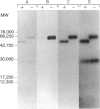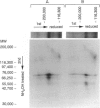Abstract
To investigate the effect of carbohydrate on activation of the alternative pathway of complement by IgA immune complexes, aglycosylated monoclonal IgA was made biosynthetically in the presence of tunicamycin. When immune complexes were incubated with normal human serum (NHS), the aglycosylated IgA immune complexes caused less depletion of the alternative pathway activity of the serum. They also bound less C3 and produced less terminal complement complexes. The binding of C3 to both immune complexes was mainly through hydroxylamine sensitive ester bonds. C3 did not bind to free IgA.
Full text
PDF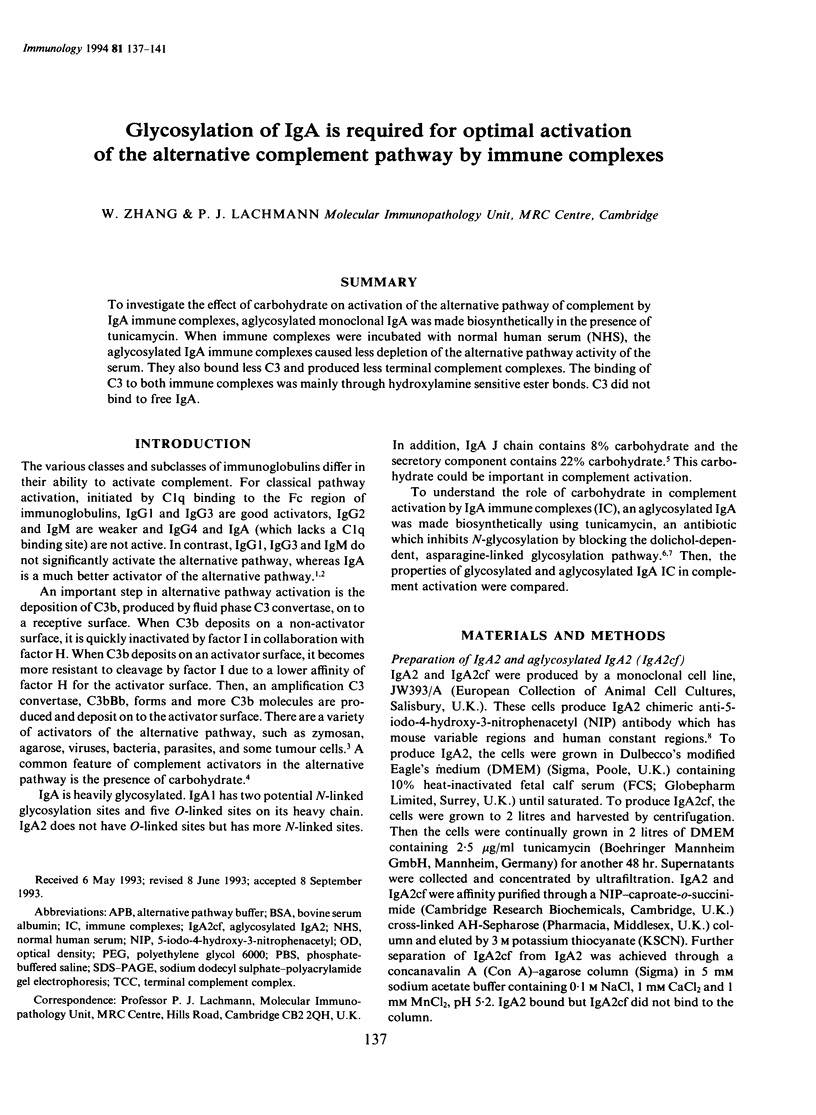
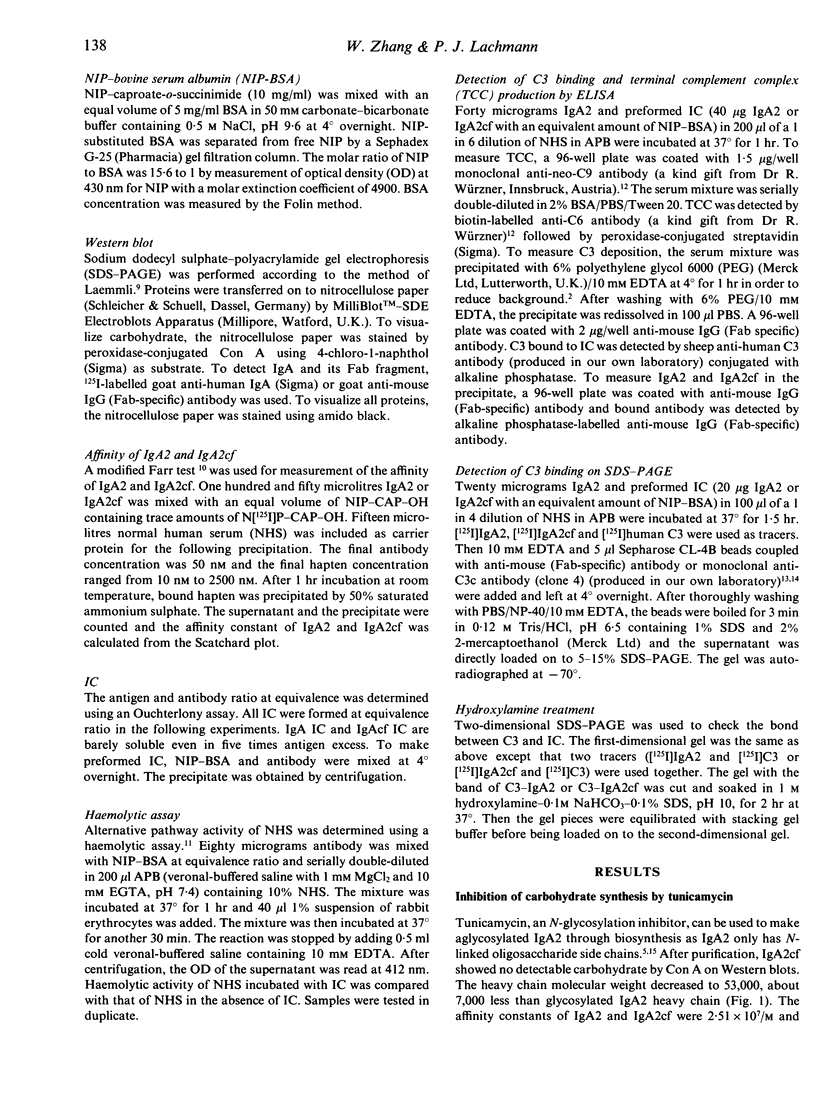
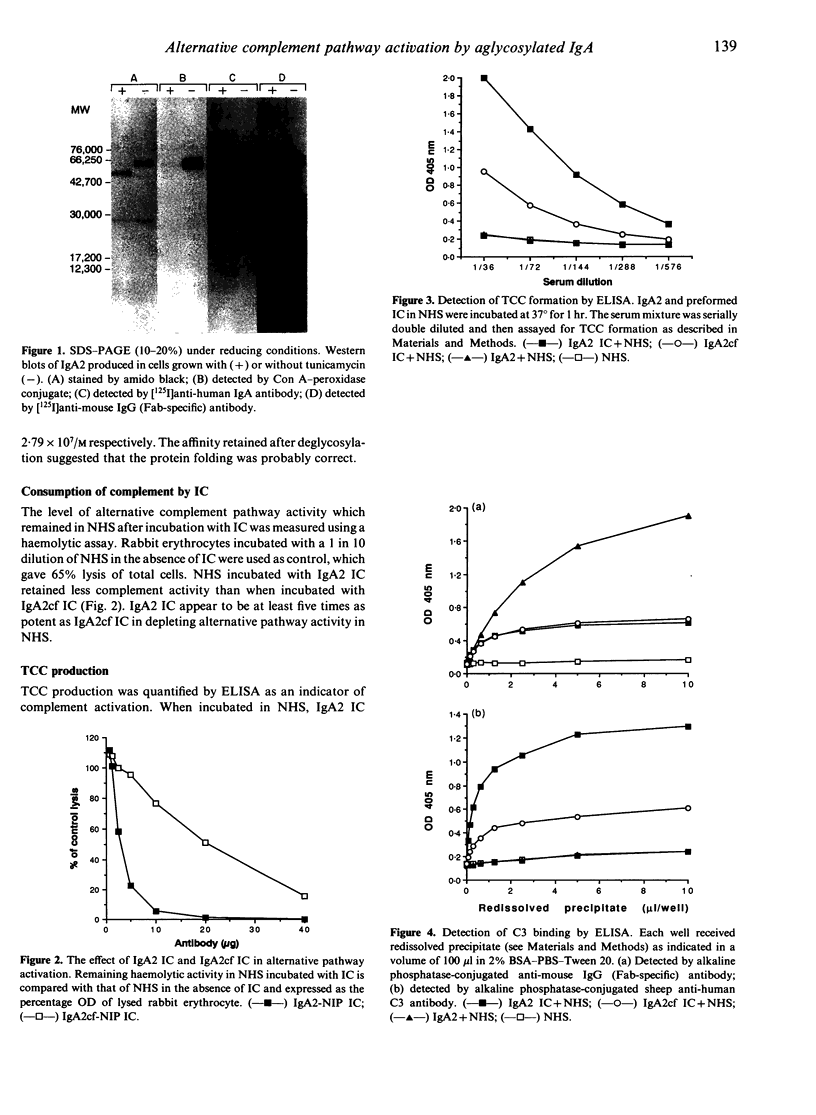
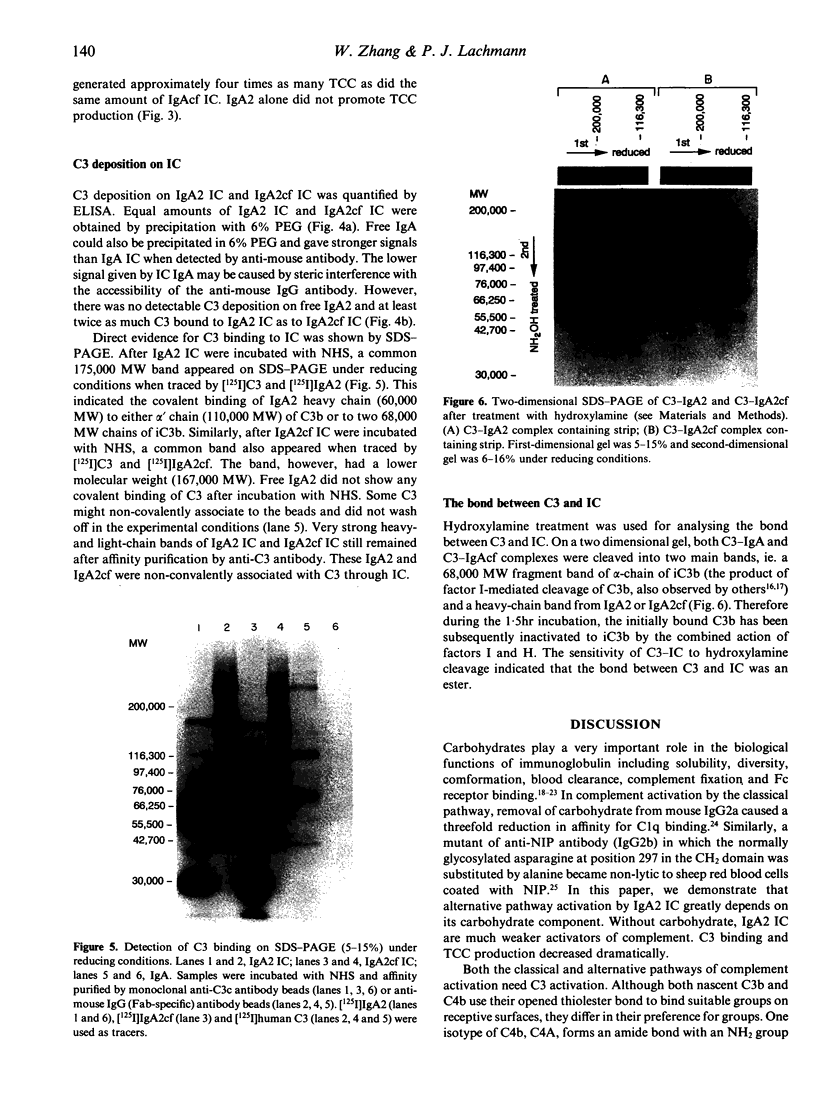
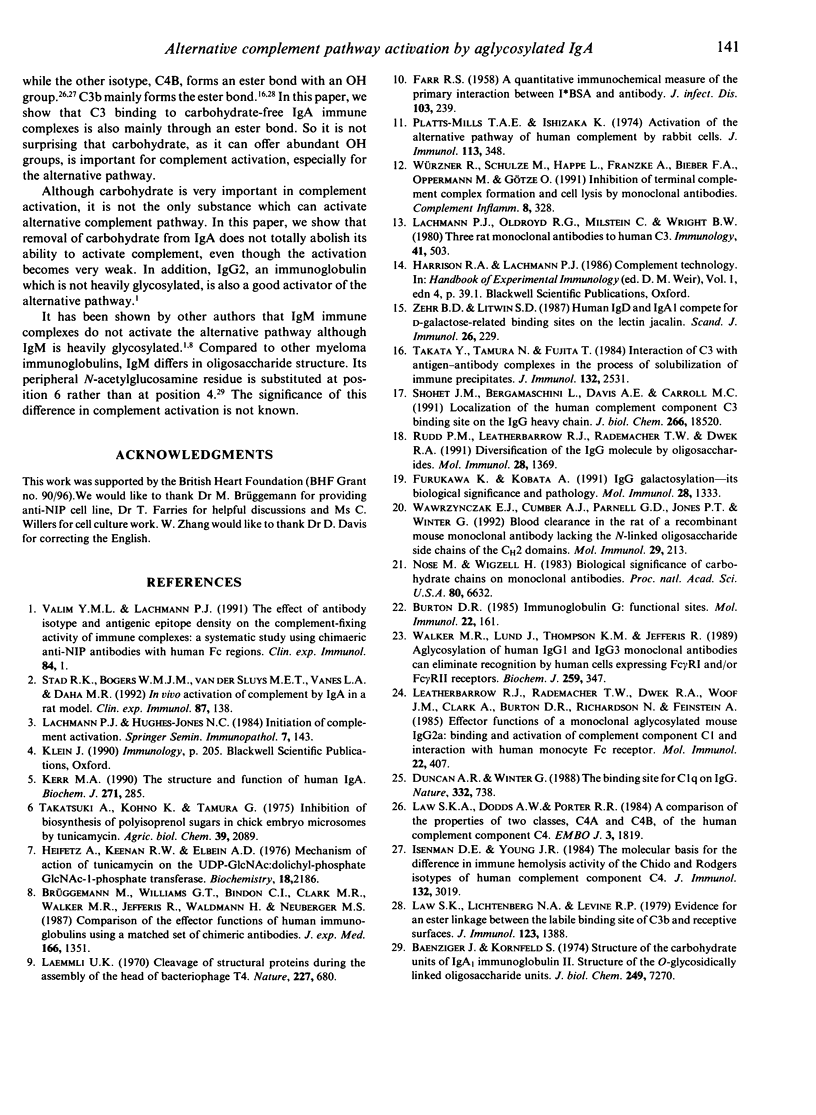
Images in this article
Selected References
These references are in PubMed. This may not be the complete list of references from this article.
- Baenziger J., Kornfeld S. Structure of the carbohydrate units of IgA1 immunoglobulin. II. Structure of the O-glycosidically linked oligosaccharide units. J Biol Chem. 1974 Nov 25;249(22):7270–7281. [PubMed] [Google Scholar]
- Brüggemann M., Williams G. T., Bindon C. I., Clark M. R., Walker M. R., Jefferis R., Waldmann H., Neuberger M. S. Comparison of the effector functions of human immunoglobulins using a matched set of chimeric antibodies. J Exp Med. 1987 Nov 1;166(5):1351–1361. doi: 10.1084/jem.166.5.1351. [DOI] [PMC free article] [PubMed] [Google Scholar]
- Burton D. R. Immunoglobulin G: functional sites. Mol Immunol. 1985 Mar;22(3):161–206. doi: 10.1016/0161-5890(85)90151-8. [DOI] [PubMed] [Google Scholar]
- Duncan A. R., Winter G. The binding site for C1q on IgG. Nature. 1988 Apr 21;332(6166):738–740. doi: 10.1038/332738a0. [DOI] [PubMed] [Google Scholar]
- FARR R. S. A quantitative immunochemical measure of the primary interaction between I BSA and antibody. J Infect Dis. 1958 Nov-Dec;103(3):239–262. doi: 10.1093/infdis/103.3.239. [DOI] [PubMed] [Google Scholar]
- Furukawa K., Kobata A. IgG galactosylation--its biological significance and pathology. Mol Immunol. 1991 Dec;28(12):1333–1340. doi: 10.1016/0161-5890(91)90035-i. [DOI] [PubMed] [Google Scholar]
- Heifetz A., Keenan R. W., Elbein A. D. Mechanism of action of tunicamycin on the UDP-GlcNAc:dolichyl-phosphate Glc-NAc-1-phosphate transferase. Biochemistry. 1979 May 29;18(11):2186–2192. doi: 10.1021/bi00578a008. [DOI] [PubMed] [Google Scholar]
- Isenman D. E., Young J. R. The molecular basis for the difference in immune hemolysis activity of the Chido and Rodgers isotypes of human complement component C4. J Immunol. 1984 Jun;132(6):3019–3027. [PubMed] [Google Scholar]
- Kerr M. A. The structure and function of human IgA. Biochem J. 1990 Oct 15;271(2):285–296. doi: 10.1042/bj2710285. [DOI] [PMC free article] [PubMed] [Google Scholar]
- Lachmann P. J., Hughes-Jones N. C. Initiation of complement activation. Springer Semin Immunopathol. 1984;7(2-3):143–162. doi: 10.1007/BF01893018. [DOI] [PubMed] [Google Scholar]
- Lachmann P. J., Oldroyd R. G., Milstein C., Wright B. W. Three rat monoclonal antibodies to human C3. Immunology. 1980 Nov;41(3):503–515. [PMC free article] [PubMed] [Google Scholar]
- Laemmli U. K. Cleavage of structural proteins during the assembly of the head of bacteriophage T4. Nature. 1970 Aug 15;227(5259):680–685. doi: 10.1038/227680a0. [DOI] [PubMed] [Google Scholar]
- Law S. K., Dodds A. W., Porter R. R. A comparison of the properties of two classes, C4A and C4B, of the human complement component C4. EMBO J. 1984 Aug;3(8):1819–1823. doi: 10.1002/j.1460-2075.1984.tb02052.x. [DOI] [PMC free article] [PubMed] [Google Scholar]
- Law S. K., Lichtenberg N. A., Levine R. P. Evidence for an ester linkage between the labile binding site of C3b and receptive surfaces. J Immunol. 1979 Sep;123(3):1388–1394. [PubMed] [Google Scholar]
- Leatherbarrow R. J., Rademacher T. W., Dwek R. A., Woof J. M., Clark A., Burton D. R., Richardson N., Feinstein A. Effector functions of a monoclonal aglycosylated mouse IgG2a: binding and activation of complement component C1 and interaction with human monocyte Fc receptor. Mol Immunol. 1985 Apr;22(4):407–415. doi: 10.1016/0161-5890(85)90125-7. [DOI] [PubMed] [Google Scholar]
- Lucisano Valim Y. M., Lachmann P. J. The effect of antibody isotype and antigenic epitope density on the complement-fixing activity of immune complexes: a systematic study using chimaeric anti-NIP antibodies with human Fc regions. Clin Exp Immunol. 1991 Apr;84(1):1–8. doi: 10.1111/j.1365-2249.1991.tb08115.x. [DOI] [PMC free article] [PubMed] [Google Scholar]
- Nose M., Wigzell H. Biological significance of carbohydrate chains on monoclonal antibodies. Proc Natl Acad Sci U S A. 1983 Nov;80(21):6632–6636. doi: 10.1073/pnas.80.21.6632. [DOI] [PMC free article] [PubMed] [Google Scholar]
- Platts-Mills T. A., Ishizaka K. Activation of the alternate pathway of human complements by rabbit cells. J Immunol. 1974 Jul;113(1):348–358. [PubMed] [Google Scholar]
- Rudd P. M., Leatherbarrow R. J., Rademacher T. W., Dwek R. A. Diversification of the IgG molecule by oligosaccharides. Mol Immunol. 1991 Dec;28(12):1369–1378. doi: 10.1016/0161-5890(91)90039-m. [DOI] [PubMed] [Google Scholar]
- Shohet J. M., Bergamaschini L., Davis A. E., Carroll M. C. Localization of the human complement component C3 binding site on the IgG heavy chain. J Biol Chem. 1991 Oct 5;266(28):18520–18524. [PubMed] [Google Scholar]
- Stad R. K., Bogers W. M., Thoomes-van der Sluys M. E., Van Es L. A., Daha M. R. In vivo activation of complement by IgA in a rat model. Clin Exp Immunol. 1992 Jan;87(1):138–143. doi: 10.1111/j.1365-2249.1992.tb06427.x. [DOI] [PMC free article] [PubMed] [Google Scholar]
- Takata Y., Tamura N., Fujita T. Interaction of C3 with antigen-antibody complexes in the process of solubilization of immune precipitates. J Immunol. 1984 May;132(5):2531–2537. [PubMed] [Google Scholar]
- Walker M. R., Lund J., Thompson K. M., Jefferis R. Aglycosylation of human IgG1 and IgG3 monoclonal antibodies can eliminate recognition by human cells expressing Fc gamma RI and/or Fc gamma RII receptors. Biochem J. 1989 Apr 15;259(2):347–353. doi: 10.1042/bj2590347. [DOI] [PMC free article] [PubMed] [Google Scholar]
- Wawrzynczak E. J., Cumber A. J., Parnell G. D., Jones P. T., Winter G. Blood clearance in the rat of a recombinant mouse monoclonal antibody lacking the N-linked oligosaccharide side chains of the CH2 domains. Mol Immunol. 1992 Feb;29(2):213–220. doi: 10.1016/0161-5890(92)90102-4. [DOI] [PubMed] [Google Scholar]
- Würzner R., Schulze M., Happe L., Franzke A., Bieber F. A., Oppermann M., Götze O. Inhibition of terminal complement complex formation and cell lysis by monoclonal antibodies. Complement Inflamm. 1991;8(5-6):328–340. doi: 10.1159/000463204. [DOI] [PubMed] [Google Scholar]
- Zehr B. D., Litwin S. D. Human IgD and IgA1 compete for D-galactose-related binding sites on the lectin jacalin. Scand J Immunol. 1987 Sep;26(3):229–236. doi: 10.1111/j.1365-3083.1987.tb02256.x. [DOI] [PubMed] [Google Scholar]



